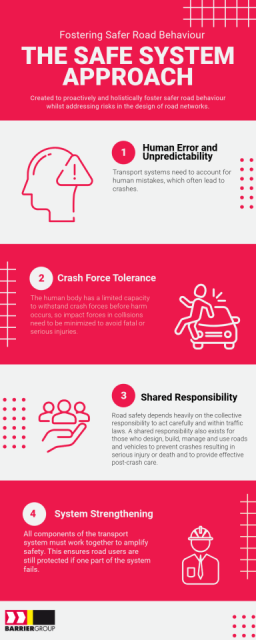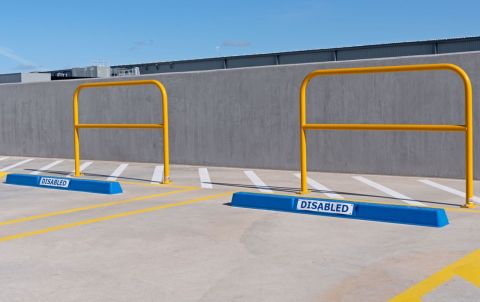Road Safety in Public and Urban Spaces: 5 Innovative Solutions Companies Are Using Today
A recent report reveals that one-third of road safety accidents occur in public and urban spaces, highlighting the urgent need for effective safety measures in these high-density areas.
Public and Urban environments present unique road safety challenges where the interaction of pedestrians, cyclists, and vehicles significantly elevates the risk of collisions.
A high rate of road traffic accidents involving vulnerable road users - particularly pedestrians and cyclists - makes targeted road safety interventions essential.
To address these risks, companies and urban planners are implementing innovative solutions that are transforming road safety in urban and shared environments.
Here, we spotlight five high-impact solutions used by today's companies and urban planners to improve road safety in public and urban spaces.
Road Safety In Public and Urban Spaces
Road safety is multi-faceted in how it is defined and measured. Most commonly, road safety is described as the measure of road crashes and casualties, often associated with negative consequences.
In public and urban spaces, road safety involves the risks associated with pedestrians and cyclists, whether pedestrian safety is compromised by a vehicle encroaching on walkways and pedestrians being in a road accident in the wrong place at the wrong time.
The 'Safe System' Approach
A common practice in road safety is to analyse road safety data to understand why crashes occur, the factors influencing risks, and crash severity. From understanding this information, key bodies can reliably recognise how future accidents can be effectively and efficiently avoided.
In 2016, the International Transport Forum (ITF) created 'The Safe System', which is intended to proactively and holistically foster safer road behaviour whilst addressing risks in the design of road networks.
The Safe System's four guiding principles include:
- Human Error and Unpredictability: Transport systems need to account for human mistakes, which often lead to crashes.
- Crash Force Tolerance: The human body has a limited capacity to withstand crash forces before harm occurs, so impact forces in collisions need to be minimized to avoid fatal or serious injuries.
- Shared Responsibility: Road safety depends heavily on the collective responsibility to act carefully and within traffic laws. A shared responsibility also exists for those who design, build, manage and use roads and vehicles to prevent crashes resulting in serious injury or death and to provide effective post-crash care.
- System Strengthening: All components of the transport system must work together to amplify safety. This ensures road users are still protected if one part of the system fails.
These principles guide the implementation of innovative solutions to make public and urban spaces safer for everyone.
Here Are Five High-Impact Solutions To Improve Road Safety In Public And Urban Spaces
What are the most effective ways to improve pedestrian safety in public and urban spaces? Here are five high-impact solutions to used by today's architects, urban planners and companies to improve road safety in urban and public spaces.
1. Bollards
Bollards are the cornerstone of a good pedestrian road safety strategy in public and urban environments. Available in both Permanent and Bike Bollard solutions, they are one of the most reliable ways to mitigate potential pedestrian hazards whilst offering durability and aesthetic integration into public environments.
Bicycle Path Access Bollards, in particular, can prevent illegal vehicle access, avoiding harm to pedestrians on bike paths, walking paths, driveways and lightweight bridge structures.
Learn how Barrier Group enhanced safety for Ace Contractors Group Pty Ltd with our Custom Architectural Designer Stainless Steel Bollards.
2. Bike Rails
Cyclists face significant risks navigating urban traffic, particularly younger, inexperienced riders. In fact, the World Health Organisation suggests that cyclists account for 6% of road facilities, with an additional 3% of deaths amongst e-scooter riders.
Street Bike Rails have a multi-purpose range of applications, such as handrails, bike storage, pedestrian chicanes at crossing points and impact protection barriers. They are ideal for road/ pedestrian crossings, walkways, warehouses, schools, parking lots and shopping centres.
Bicycle (Bike) Safety Rails also act as path-holding rails when target boards are provided. Designed for cyclists and pedestrians at walkways and crossings, target boards at night provide additional visibility and reflective surface coverage.
3. Speed Humps
Controlling vehicle speeds, especially in urban and public spaces, is critical to reducing road safety accidents. Speed Humps force drivers to control their speed and flow of traffic.
A case study conducted by the American Public Health Association found children struck by moving vehicles in public and urban spaces saw a 53% to 60% reduction in injuries and deaths when speed humps were implemented.
Controlling vehicle speeds, especially in urban and public spaces, is critical to reducing road safety accidents. Speed Humps force drivers to control their speed and flow of traffic.
A case study conducted by the American Public Health Association found children struck by moving vehicles in public and urban spaces saw a 53% to 60% reduction in injuries and deaths when speed humps were implemented.
4. Delineators
Delineators are versatile tools in public and urban spaces, helping to manage road safety by directing traffic flow effectively and creating temporary or permanent lanes for vehicles and pedestrians.
Flexible Delineators with a bolt-down base are valuable in dynamic urban environments or during infrastructure upgrades.
5. Wheel Stops
In parking lots and shared spaces, pedestrians can be endangered when vehicles extend beyond the designated area. Wheel stops are designed for indoor and outdoor use; they are suitable for both indoor and outdoor use to enhance public and urban safety.
Incorporating bollards, bike rails, speed humps, delineators, and wheel stops into public and urban planning is a proven way to reduce road traffic injuries and fatalities. As cities grow, prioritising road safety through adaptable, sustainable solutions is paramount.
Road Safety In Public and Urban Spaces - Case Study
Need inspiration? Ace Contractors Group Pty Ltd (also known as Ace Infrastructure) partnered with Barrier Group in Caroline Springs, Victoria, to improve road safety separation between heavy vehicle traffic, pedestrians and kerbside diners.
Leveraging our custom heavy-duty architectural designer stainless steel bollards, we significantly improved safety for outdoor diners and pedestrians in Caroline Springs, providing peace of mind to pedestrians and diners alike.
These bollards now act as an effective barrier, separating the busy road from the dining area without compromising aesthetics.
Read more about the case study for Ace Contractors Group Pty Ltd!
Contact Our Road Safety Experts Today
At Barrier Group, we specialise in the development, manufacturing, supply and installation of workplace and pedestrian safety solutions. With a diverse and passionate team of safety experts in Geelong, Melbourne, Sydney and Brisbane, Australia, our wide range of safety products and services are needed by facilities and organisations around Australia.
Have a safety concern or problem in your business? Let our experienced safety experts get in touch to organise a free on-site consultation of your business today!








